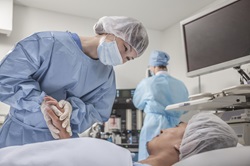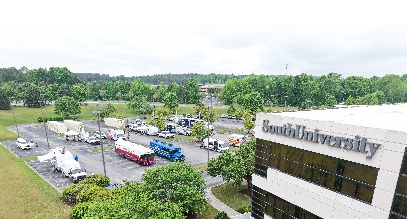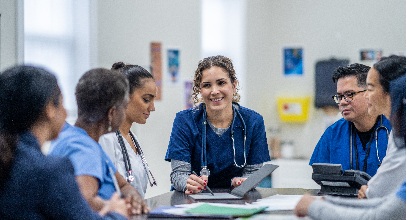
Hands-on experience in clinical settings is invaluable in helping our Master of Medical Science in Anesthesia Science students build their technical skills. Throughout the program, our students participate in multiple full-time, month-long clinical rotations in practice settings. Each rotation is led by a clinical preceptor.
“You actually hang out with a preceptor and learn the steps to start intubations, how to place LMAs [laryngeal mask airways], and how to induce anesthesia,” explains Jayesh Bodalia, a Certified Anesthesiologist Assistant and 2006 graduate of the South University, Savannah Anesthesia Science program. “That's what a preceptor does. It's a certified anesthesiologist assistant or an anesthesiologist that has a student with them and teaches the students the ropes of anesthesia.”
Today, Jayesh is a full-time anesthetist for Southeast Georgia Health System and the clinical student coordinator there for the students in our Savannah Anesthesia Science program.
“When I was a student, I had great clinical preceptors,” he recalls. “Working with those great preceptors, I wanted to be just like them or better when I came out of school. Because I knew how much of an impact they had on teaching me, I wanted to have that same impact on the future students.”
Logan Donevant is another South University, Savannah graduate passionate about precepting. He completed the Anesthesia Science program in 2018.
“Before I decided to come pursue anesthesia, I was thinking about getting a PhD in chemistry and teaching at the college level, so I love being able to teach,” he says. “Being able to watch these students progress is very gratifying from both being proud of the program that I came from and seeing what people are able to teach them.”
Before starting clinical rotations, students spend a week shadowing an anesthesiologist assistant to learn what life is like on the job. They then begin their rotations, gaining increasingly advanced experience with a full range of surgical procedures. Students work with patients of all ages and degrees of illness.
“Early on in their training, I'm very hands-on and explaining to them the way that I do things. As they progress, as they get closer to that fourth and fifth quarter or even getting onto their heart rotation, I give them more room to practice their own way,” he says. “I'm not trying to make practitioners who are carbon copies of me. I'm trying to make practitioners who are able to make these decisions themselves. As they get further along in the program, I back away more and give them that opportunity to see that this is something that they can do and give them that self-confidence.”
Do you want to pursue a career as an anesthesiologist assistant?
Learn how studying Anesthesia Science at South University could prepare you for your future!1
1South University does not promise or guarantee licensure, employment, or salary amounts.
Graduates are required to sit for and pass the national certification exam and obtain a state license in order to work in the field. (Exam names vary by program) Please refer to the State Professional Licensure Determination and National Certification/Licensure section of the University catalog for program and state specific information. Graduates are required to sit for and pass the national certification exam and obtain a state license in order to work in the field. (Exam names vary by program) Please refer to the State Professional Licensure Determination and National Certification/Licensure section of the University catalog for program and state specific information. South University cannot guarantee each graduate will pass the required licensure examinations. Outside agencies control the requirements for taking and passing certification/licensing exams and are subject to change without notice to South University. Students must pass the required licensure to work in their respective field.
Testimonials have been provided by students/alumni in their own words and without coercion. The quotes included in this post are from video interviews with Jayesh Bodalia and Logan Donevant published in 2024.




